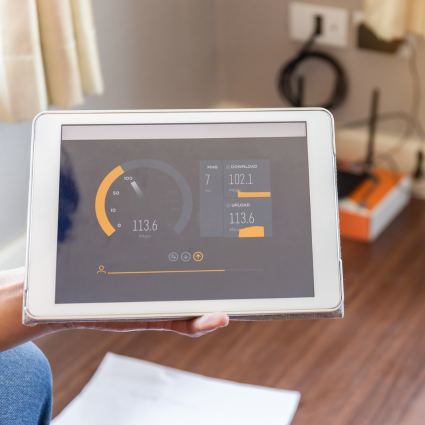With the rise of the remote work/telework, network engineers have shifted from being enablers of connectivity to drivers of productivity. As a former network engineer, I realize this isn’t a trivial shift.

Given the impact the recent pandemic is having on the nature of the workplace, we need to consider how recent events will shape our future, including the future of the network, telework and the rise of the distributed enterprise.
A recent IDG report hints at the shift underway:
Three months ago, 16.5% of their employees worked from home at least 60% of the time. As of March 23rd, that number had climbed to 77.7%, an increase of 4.7-fold. Notable was high tech firms which grew from 31.9%, to 90.2%. – Bob Bragdon, CSO Pandemic Impact Survey, April 2020
#WFH Didn’t Start with COVID19
Even if this pandemic is short-lived, there are ample justifications for industries to encourage remote work, as the #WFH trend was well underway before 2020:
Between 2005 to 2017, there was a 159% increase in remote work. In 2015, 3.9 million U.S. workers were working remotely. Today that number is at 4.7 million, or 3.4% of the population. – Brie Weller Reynolds, Flexjobs – July 2019
The remote shift will fundamentally transform how we collaborate going forward, from centralized companies with massive headquarters fed by a few dozen smaller sites and mostly contractor and/or temporary teleworkers and strategic employees into flatter, distributed organizations with smaller HQs.
Root Causes Will Become More Elusive
Several industries are already headed in that direction, yet the need for digital speed and resilience against a wider array of unanticipated natural events and business outcomes will only accelerate the process.
Network engineers understand the problem, including why growth in network size and complexity will impact their ability to diagnose root causes of problems. Issues can start anywhere, from logical or physical objects to the network, attached systems, or even applications. One issue can cause many more symptoms in other related areas. It may not even manifest itself consistently in the object where it resides.
The same team monitoring a larger, more complex network will understandably need more time to resolve problems. What might take a week or two in a smaller network could easily take months as size and complexity grows, especially in remote offices and teleworker sites. There are also more potential symptoms in complex networks, which means more impacts and more things to consider in root cause analysis.
Network Monitoring Needs to Evolve
We’re going to have to monitor networks differently. Not just the VPNs connecting remote users but LANs/WANs and carrier networks as well. Downtime is getting more costly and network engineer time more valuable than ever.
Network monitoring tools need to evolve to address new challenges inherent with larger, more complex critical infrastructure. For too long we’ve only relied upon tools built for simpler network architectures with fewer devices, users and locations. Tools that simply pull device status, commonly used in most networks and based on SNMP, aren’t enough to troubleshoot end-user experience issues, especially when the network isn’t the problem. These tools force network teams to be in a reactive mode, depending on users to identify problems, after they have already suffered a loss in productivity.
User Experience is Now Strategic to Productivity
Depending upon users for the identification of potential network issues has historically been an acceptable practice, because the benefits of connectivity were so great that a little downtime was an acceptable price. A little connectivity is better than no connectivity. That is changing because of #WFH and the emergence of more distributed organization operating models.
With these new models, network performance and uptime will have a far greater impact on productivity than even a decade ago, when most of today’s monitoring tools were architected. And the user experience is now paramount, versus a secondary consideration.
Depending upon users to identify issues is unacceptable in distributed organizations. Network monitoring is no longer about network device uptime but rather end-user experience.
The new standard will require new capabilities, including triangulating raw data from multiple sources instead of samples collected from devices. Problems need to be discovered in seconds instead of when users detect them. Real-time, granular insight is more important than ever before.
Six Key Capabilities for the Remote Shift
- Real-time data feeds, including user experience, for fast detection
- Granular, raw data for detecting intermittent issues
- Distributed monitoring for faster resolution
- Easy installation for remote offices and #WFH
- Scale without polling interval latency for faster resolution
- User-defined anomaly settings for reducing false alarms
Seconds Count in the Digital World
After the go go years of the network we’ve become complacent and started taking performance and uptime for granted. We’ve been investing in new technologies primarily for cost reduction. As networks grow larger, more complex and strategic to productivity it’s time we think about performance and uptime from the standpoint of end-user experience. Otherwise the benefits of the distributed organization will be offset by out of date network management processes, poor network performance and less productive employees.
Network teams might be able to keep up by spending more days on root cause analysis, but that will pull them off strategic, value-add projects that are even more important than ever. The distributed enterprise depends upon high performance network monitoring from the user’s perspective. The remote shift will only accelerate the obsolescence of outdated network management tools.





